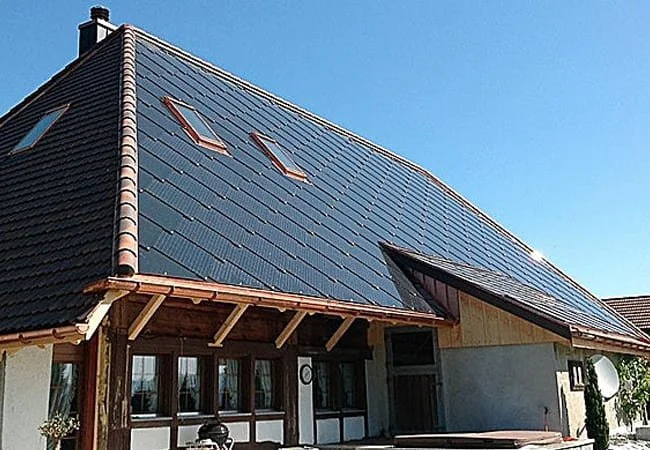From ditching single-use plastic and paper products to grabbing a shovel and carving out your own backyard compost pile, there are countless ways to reduce waste and save energy at home.

5+ ideas for a more sustainable life
For sustainability-minded homeowners, going greener may require creativity, time, and a little research. So whether you’ve read every article on the subject or are still in the process of mastering your neighborhood’s newest recycling guidelines, here are a few ideas to help you save energy and go greener at home.
1. Perform a home energy audit
Inspect your insulation, look for any gaps in your home’s exterior (like around window frames and eaves), check that all ducts are tight-fitting, and confirm that holes drilled for electrical wiring are properly sealed. Swap any incandescent light bulbs for LEDs. Use energy.gov’s checklist to guide your DIY audit and help you identify easy fixes that will save you energy and money.
Or, have an audit done professionally by a home energy technician for a more in-depth look at your home’s energy consumption. For a few hundred dollars, expect a professional assessment to be thorough. Auditors employ specialized tools to detect gaps where cold air may be sneaking in. Beyond checking for leaks, an auditor will examine your appliances, including your furnace, water heater, dishwasher, and clothes washer and dryer. If your appliances are working inefficiently, consider upgrading. It may end up costing you less to replace old appliances than it would to keep them running. According to Energy.gov, a professional audit could help you reduce your energy bill by up to 30%.
2. Use natural light and window treatments strategically
A good way to heat and cool your home efficiently. For the average homeowner, this expense comprises a sizable chunk—often nearly half—of their monthly utility bill, making rethinking temperature control a key path to major savings. Letting sunlight in will help you heat your home passively in winter months. Skip turning the lights on unnecessarily during the day by spending time in rooms that are full of natural light. During the summer, be sure to use window coverings to keep your home cool before reaching for your thermostat. If your windows aren’t already outfitted, consider installing coverings yourself. From cloth drapes to transparent solar shades designed specifically to block UV transmission, there are options suited to every style and available at every price point.
Or, install a smart thermostat to control the temperature in your home remotely. For a few hundred dollars, these thermostats enable the user to adjust the temperature from a cellphone or laptop, meaning that you don’t need to be home to dial it up or down. These smart devices can also self-adjust in response to changes in weather or humidity. Programmable smart thermostats can learn to shut off when no one is home and click back on to make your home comfortable again before your arrival at the end of the workday. Those who have upgraded from original analog devices report between 10%-15% savings. So your thermostat should pay for itself within a few years.
3. Drive less and bike more
You will reduce your daily greenhouse gas emissions. Even before gasoline is burned to power a conventional vehicle, the petroleum extraction and refinement process contributes to both climate change and the harmful deterioration of our air quality. Whenever possible, opt to walk, bicycle, or take public transportation.
Or, invest in an electric vehicle for a more environmentally friendly commute. If public transportation options are limited in your area and biking isn’t a realistic option, consider investing in an EV. With most major automakers manufacturing at least one electric or hybrid option—and some, like General Motors, committing to transitioning to an all-electric line—EVs are becoming more affordable every day. Recent legislation promises to incentivize consumers to go electric with federal rebates and tax breaks, with an ever-expanding network of public charging stations making charging your EV more convenient than ever before.
4. Lower the temperature on your water heater
From bathing to washing clothes and dishes, it’s no surprise that our hot water needs make the cost of heating water the single largest monthly expense for most US households. While lowering the temperature on your home water heater is a surefire way to reduce your bill, opt also to wash your laundry in cold water and line dry whenever possible.
Or, look into solar thermal water heating. For those unwilling to sacrifice hot showers, a solar water heating system offers an environmentally friendly solution. Passive systems reduce the strain on your home’s traditional water heater by first heating your municipal water directly with sunlight. In active systems, flat-plate solar collectors heat copper piping containing a heat transfer fluid that flows through the pipes into the water tank. Depending on climate, sun exposure, and your family’s hot water usage, your home may be a good candidate for either a passive or active system. Installing home solar thermal water heating will cost several thousands of dollars upfront before the monthly savings, but is eligible for the residential Investment Tax Credit. Check with your local solar provider for a quote.
5. Buy green power
In Europe, energy customers have the option of purchasing Guarantees of Origin (GO). These tradable electronic certificates prove that the electricity purchased by a consumer comes from a renewable source, such as wind, solar and hydro power. In the United States, utility companies in several states give customers the option to purchase locally generated renewable energy through agreements known as green pricing programs. Another option for consumers looking to limit their carbon footprint is the purchase of Renewable Energy Certificates (RECs). Unlike green pricing programs, RECs are available to anyone in the US, meaning the RECs you buy may not represent energy generated in your state. Whether you’re purchasing clean power from your utility, or bypassing them completely by buying RECs directly from outside suppliers, the EPA suggests buying only third-party certified energy products to ensure that the energy you purchase meets national environmental standards. Use Green-e to search for available programs and REC providers.
Or, invest in a PV roofing system to produce your own clean energy. Installing a solar array or an integrated solar roof is the most impactful way to reduce your dependence on conventionally generated energy. While this type of installation requires an upfront investment (expect cost to vary depending on the type and size of system you install), your solar company can help you understand your expected payback period and how much to anticipate in annual energy savings in the meantime. Today’s solar market has a number of competitively-priced photovoltaic roofing products. Check our solar finance guide for a more complete understanding of the costs associated with installing a home solar power system.
For more information about SunStyle’s solar roof, visit sunstyle.com
Power your interest in the future of solar roofing by following us:
Instagram @sunstyle_solar
Facebook @sunstylesolar
LinkedIn linkedin.com/company/sunstylesolar
Youtube @youtube channel


